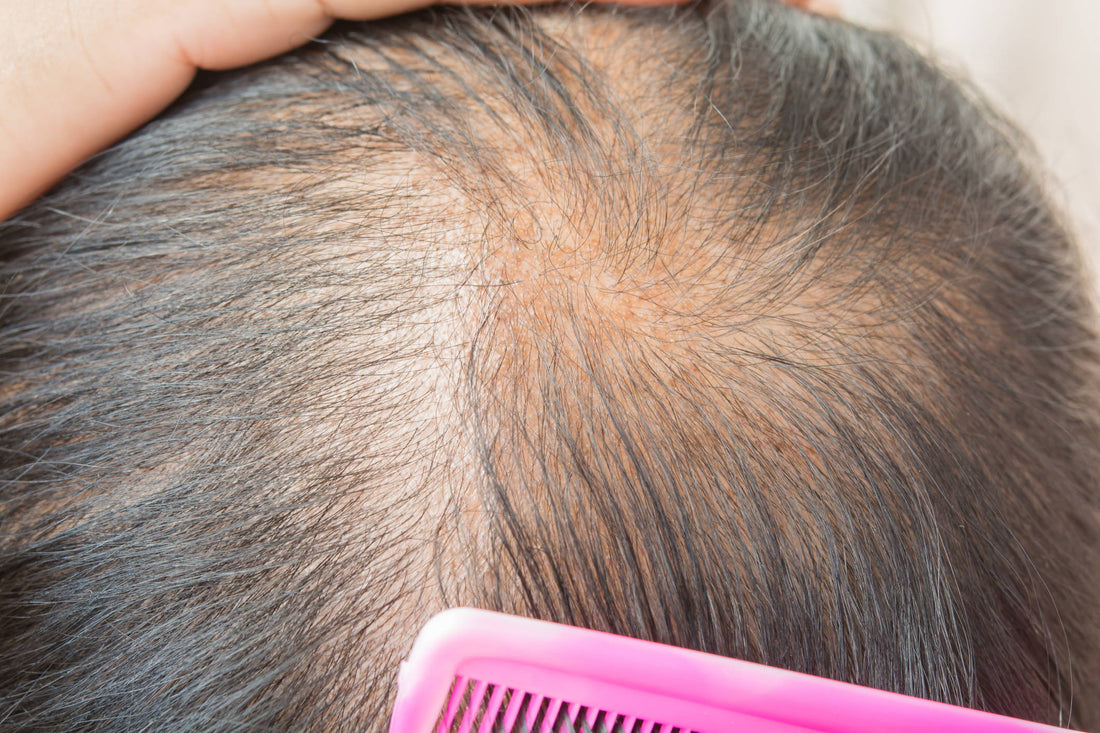Often, we use the terms fine and thin hair interchangeably. After all, they sometimes mean the same thing in other circumstances. But, when it comes to hair, fine and thin are two very different things. Fine hair has to do with your hair texture, and thin has to do with the number of hairs you have at any given point. Let’s take a deep dive into understanding the difference between fine and thin hair and how you can best care for the hair you have on your head.
Fine Hair Explained
People with fine hair have very delicate, soft hair. Each individual strand is often feathery, and it can be rather fragile. And, even if you have a lot of hair, it can be hard to make it look like you have any volume. Indeed, one of the bigger complaints for people with fine hair is that it can be tough to style. Not only is volume tough to achieve, but it can be difficult to hold a curl or other styles aside from what is natural.
Thin Hair Explained
Contrary to fine hair, thin hair doesn’t have to do with hair texture necessarily. Rather, it has to do with your hair density. People with thin hair have a lack of hair on their heads. Thus, they could have coarser or thicker individual strands but still struggle with scarcity.
Of course, if you have both thin and fine hair, it can feel like you are particularly disadvantaged because the amount of hair you have can seem even more sparse than a person who has coarse or more texture hair strands.
There is little you can do to correct fine hair, as that is just part of your genetic code, but there often is something you can do about thin hair. Most often, there is a reason why your hair is thin - especially if you once had thicker hair but now it has become less dense. Some of the most common reasons for thin hair include:
- Telogen effluvium
- Androgenic alopecia
- Trauma to the hair itself
- Nutritional deficiencies
- Chronic health problems
Telogen effluvium is a condition where an excess amount of stress leads to temporary hair loss. The causes can be varied, from childbirth and breastfeeding to surgery or emotional strain. Most people will experience telogen effluvium at some point in their lives. One of the hallmark signs of this condition is excessive hair shedding about three months after a stressful event. Indeed, this is the culprit behind postpartum hair loss, affecting new mothers around three months from delivery.
Androgenic alopecia also deserves some extra attention and explanation because it is the most common cause of permanent hair loss in both men and women. Indeed, it is the cause of the infamous receding hairline and bald spot. Unlike telogen effluvium, the cause of androgenic alopecia is a little more vague, but it likely comes down to our genetics.
Intriguingly, androgenic alopecia causes not only thinning hair, but also fine hair. One of the hallmark signs of this form of hair loss is the individual strands getting smaller and smaller in diameter until the hair follicle eventually stops producing altogether.
Treating Fine and Thin Hair
Regrettably, there is not much we can do to thicken our hair strands if we are born with fine hair. Certainly, you can work with different hairstyles and specific products to help your hair have more volume. With that said, one of the best things you can do is avoid certain styling practices that can damage fine hair, such as coloring the hair or frequently using hot styleing tools or tension hairstyles (like tight ponytails). All of these practices can damage the cuticle of the hair, causing it to become more limp and lifeless, or to break off altogether.
There are more options if you want to correct thin hair. Firstly, you must identify what is causing your hair thinness. For most people, it is due to androgenic alopecia, for which there is no cure. However, there are effective solutions for stopping further losses and encouraging hair regrowth. Topical solutions like minoxidil and Nanoxidil can help hair regrow with regular use. Likewise, certain oral medications may help, such as finasteride. However, this medication is limited to me and often has side effects that may compromise a person’s quality of life.
Tips for Adding More Density to a Thin Head of Hair
- Find out what is causing hair loss (it may be androgenic alopecia, or it may be from a chronic health condition like hypothyroidism or a nutritional deficiency).
- Give your hair a rest from any styling practices that may be damaging (i.e., hot styling tools, hair coloring, etc.).
- Curb stress, in case you are suffering from telogen effluvium
- Use a topical hair regrowth solution like Nanoxidil (a more robust alternative to minoxidil).
- Eat a well-balanced diet and get plenty of sleep.
- Take a hair growth supplement like the REVITA Nutraceutical Tablets for Hair Growth Support, which includes only the ingredients your hair needs for growth.
- See a specialist if you are still struggling with hair thinning despite taking the above steps.

